In the mountainous district of Nam Giang, the Gie Trieng people continue to weave the fabric of their cultural identity with skilled hands and enduring spirit – from simple looms to handwoven baskets. Once thought to be fading, these ancient crafts still thrive as a vital part of daily village life.
A wedding gift no one dares forget
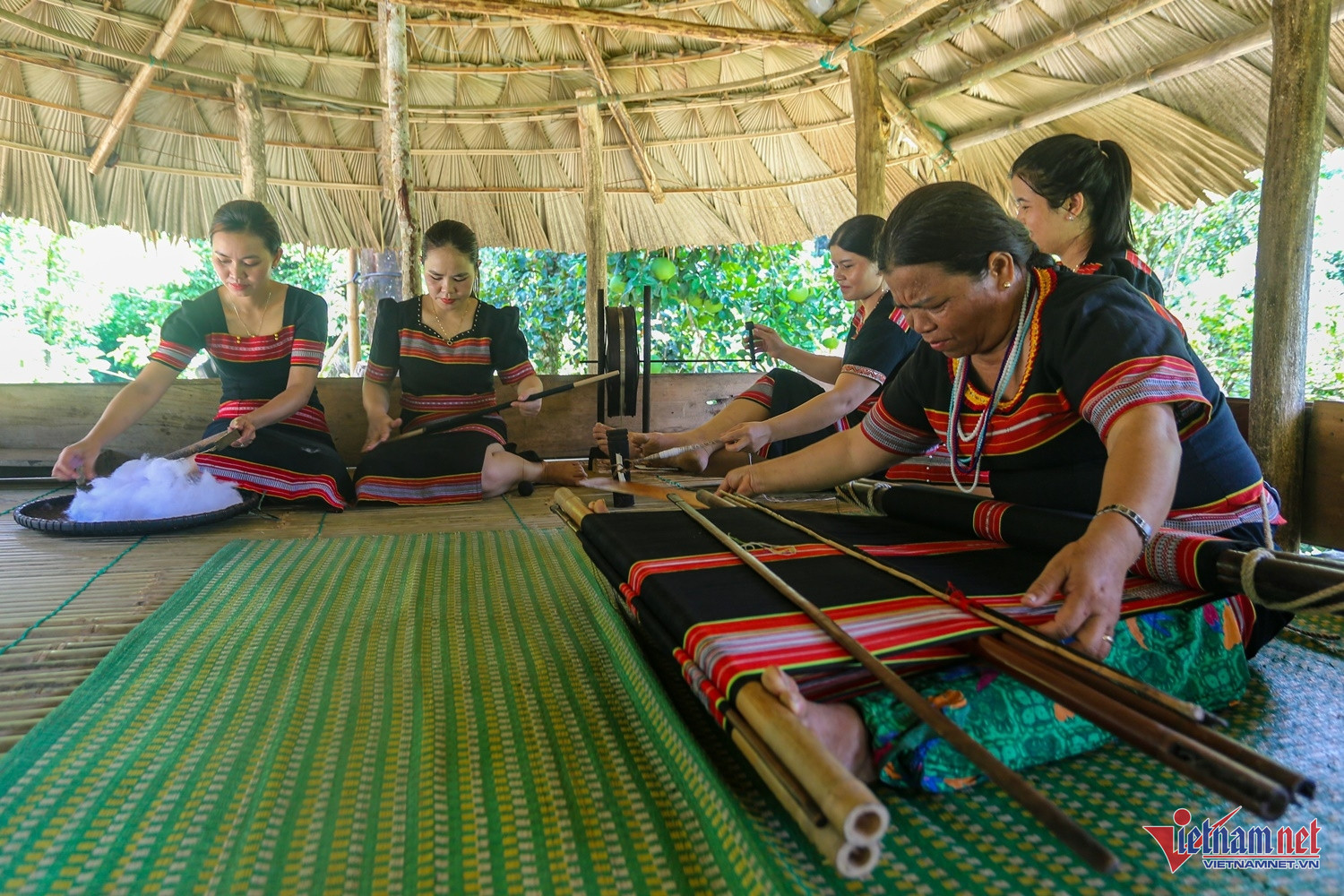
For centuries, weaving has been an indispensable part of Gie Trieng women’s culture. Photo: Ha Nam
We visited Dak Pring commune in Nam Giang district, Quang Nam province, bordering Laos, on a sunny early summer day. Under the lush forest canopy, stilt houses nestled against the hillside echoed with the rhythmic sound of looms - creating a peaceful melody of a village that has preserved its traditions intact.
In a modest home in hamlet 49B, artisan Kring Thi Viet (63) sat with her five daughters-in-law, working the loom. Her hands moved deftly, threading intricate patterns into the fabric. These designs are the culmination of a meticulous process: from cotton cultivation, fiber drying, and dyeing to weaving each thread by hand in the traditional technique.
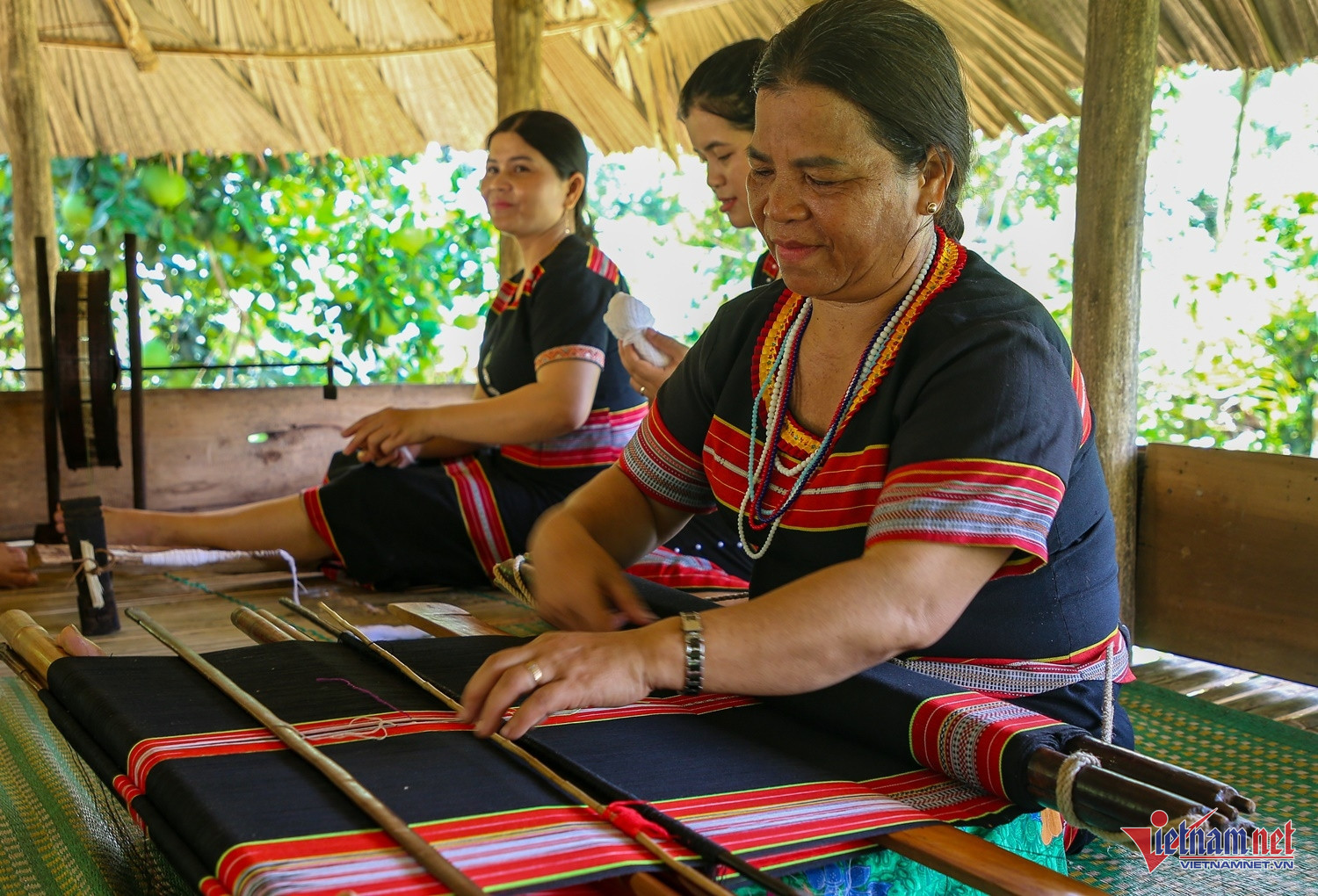
Master artisan Kring Thi Viet skillfully weaves traditional patterns. Photo: Ha Nam
As a master weaver in the Gie Trieng community, Viet holds many secrets of brocade weaving. According to her, each motif - woven entirely by hand - reflects a harmony between nature and the soul of the highland women. Though their wooden looms produce only narrow strips of fabric, every thread carries the weight of cultural legacy.
Cotton is sown in April and harvested by early October, then spun into thread. To achieve the desired hues, the Gie Trieng extract dyes from various barks and shells - a technique passed down through generations.
“Traditional women's skirts are dyed indigo, decorated with red, white, and yellow patterns. Each motif tells stories of our village, ancestors, mountain gods, and water spirits. For men, clothing includes loincloths, shawls, and headscarves. These fabrics are not just garments - they're treasured wedding and ceremonial gifts,” Viet said.
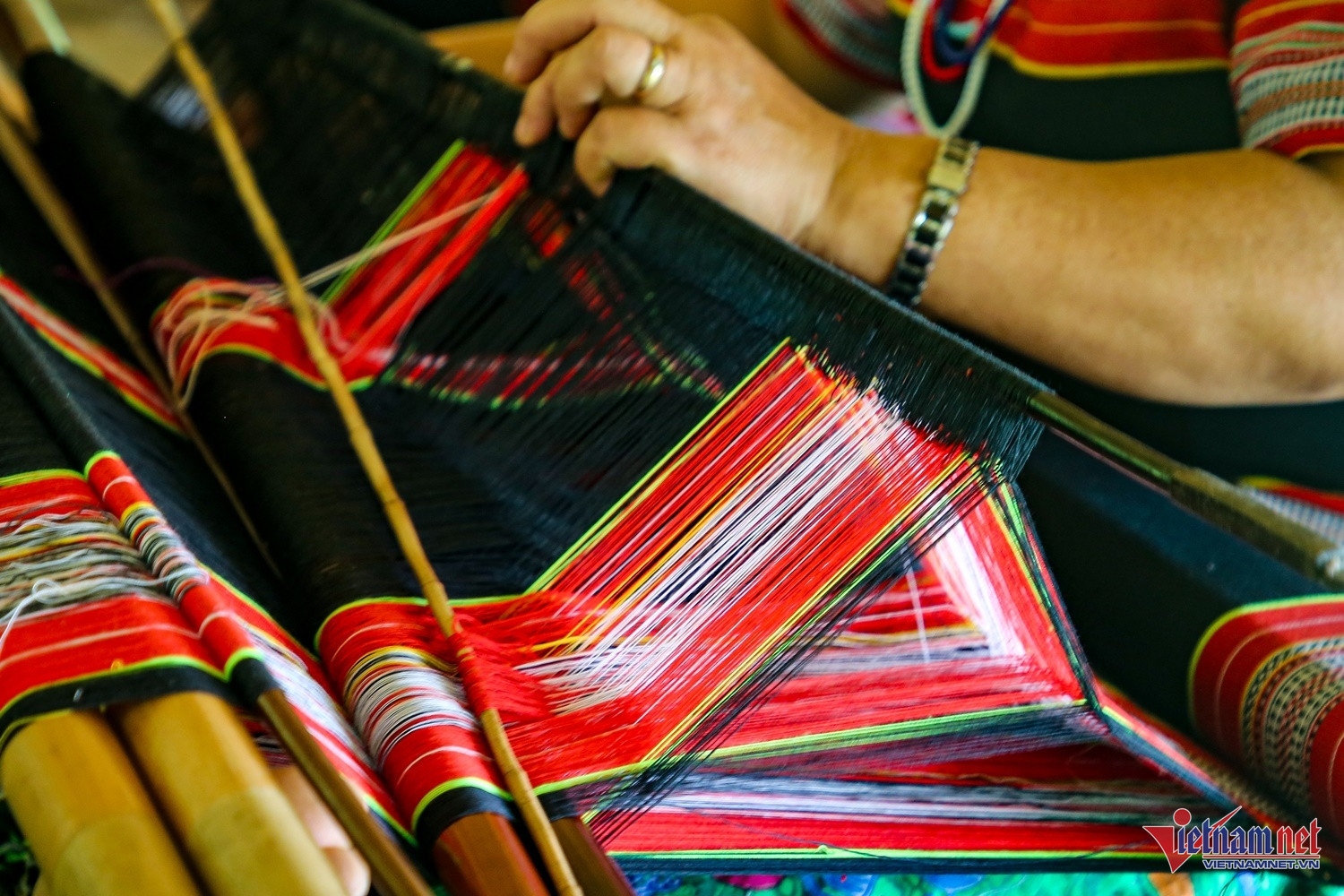
Traditional outfits reflect the distinct beauty of the Gie Trieng community. Photo: Ha Nam
If Gie Trieng women preserve tradition through textiles, their men do so through the craft of rattan backpack weaving - an essential trade for life in the fields.
Village elder Phong Nhap (69) recounted: “I learned to weave rattan packs from my father at age 20. Thanks to this craft and farming, I raised 10 children.”
“Life used to be tough, but things are better now thanks to government support. We have electricity, no need for torches at night to slice bamboo,” he laughed.
Whenever one of his sons marries, Nhap weaves a special backpack as a wedding gift for the new daughter-in-law. “It takes one day to complete a pack if materials are ready. They sell for around $27 each. The hardest part is splitting and shaving the bamboo,” he shared.
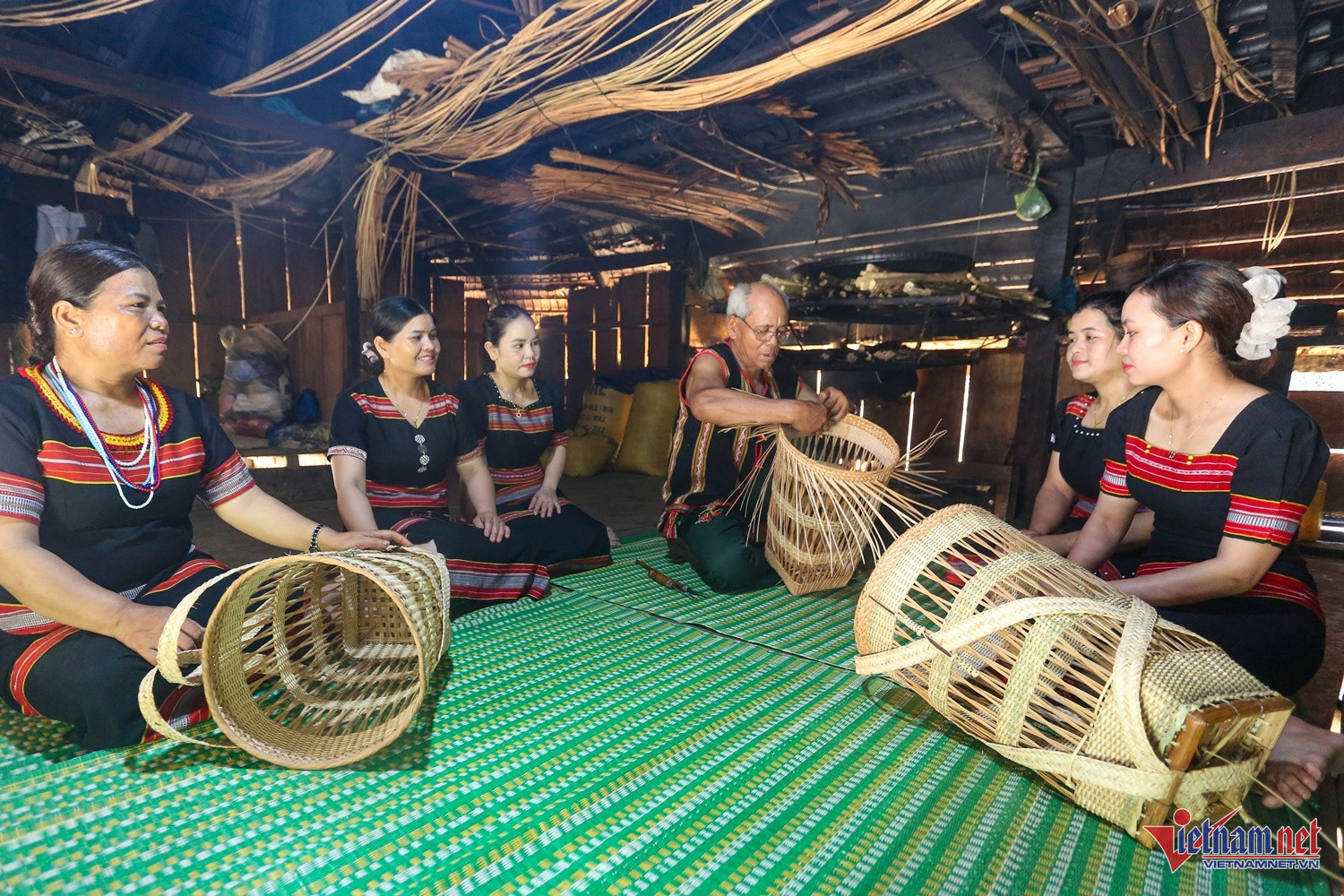
Elder Nhap weaves special rattan packs as wedding gifts for his daughters-in-law. Photo: Ha Nam
“These rattan packs are more than just backpacks - they're cultural symbols and essential wedding gifts. In our custom, no wedding is complete without one. If a groom doesn't bring a pack to the bride’s family, it's considered disgraceful. Sometimes, families offer up to 20 packs as wedding dowries filled with sticky rice and dried fish,” Nhap explained.
He added, “Back in the day, a man who wove beautiful packs caught the eyes of the women. That’s how I won my clever, beautiful wife,” he said with a gentle smile.
To this day, he still crafts rattan packs, baskets, and sieves for his children and grandchildren. For the Gie Trieng, a father’s pack and a mother’s woven skirt are not just tools - they're symbols of family pride, memories of the homeland carried throughout life.
Keeping tradition alive like protecting the forest
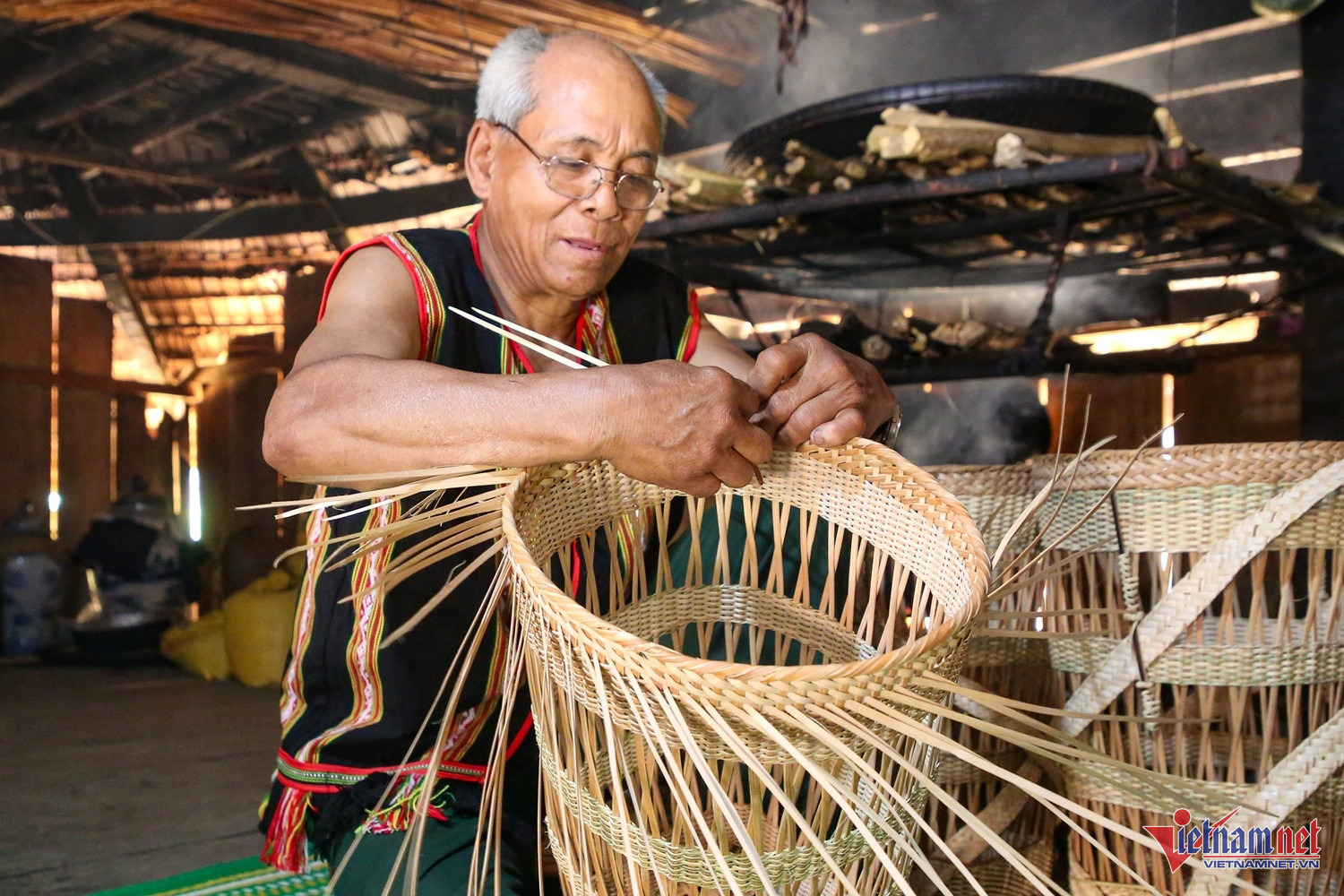
Materials include bamboo, rattan, and forest vines split into thin, flexible strips. Photo: Ha Nam
Beyond weaving and basketry, the Gie Trieng also play a unique traditional musical instrument called the "dinh tut." In their language, “dinh” means bamboo tube and “tut” refers to sound. The instrument consists of six bamboo tubes of varying lengths and pitches: Pidu, Pidy, Chel, Chak, Ron 1, and Ron 2.
Artisan Phong Quoc Quyen (57) explained that the instrument originated from agricultural life. In the past, people used bamboo tubes to carry seeds. When wind passed through, it created pleasing sounds. Inspired by this, the Gie Trieng developed the dinh tut - a folk instrument used both for entertainment and rituals.
When performed, six men each blow a tube while mimicking rice-planting gestures. Their harmonized melodies echo through the forest, bringing life to ancestral songs.
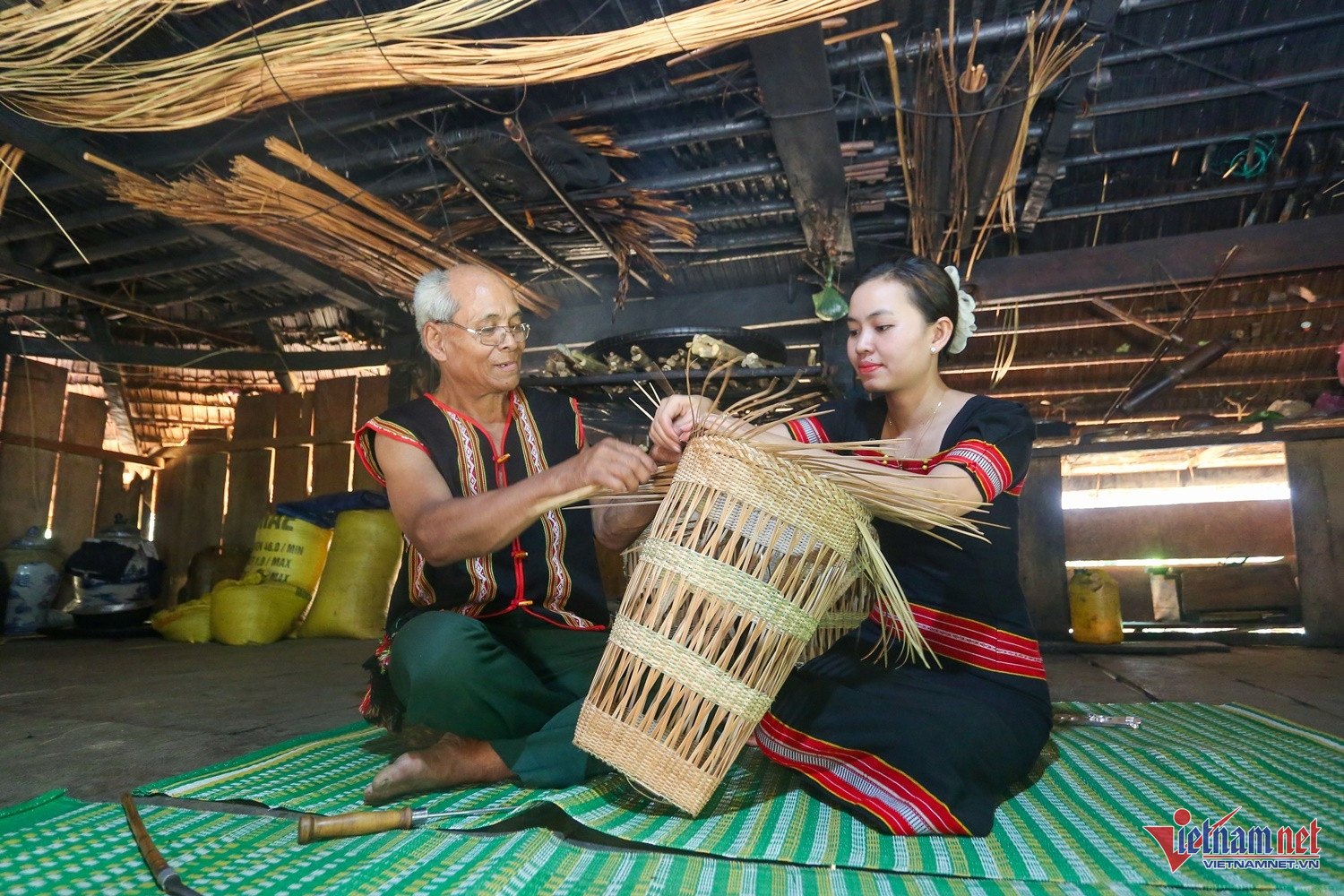
Elder Nhap teaches his youngest daughter-in-law, Kring Thi No, to weave. Photo: Ha Nam
Master craftsman Kring Nhe’h (75) said playing the dinh tut requires strength, musical sensitivity, and precise breath control. The quality of the sound depends entirely on one’s ear for tuning the tubes. “Sadly, very few young people learn it anymore,” he said.
In modern times, these crafts face many challenges. Bamboo, rattan, and cotton are increasingly scarce. Young people often leave for school and don’t return to learn traditional skills. Industrially made goods are cheaper and more accessible, making handcrafted products harder to sell.
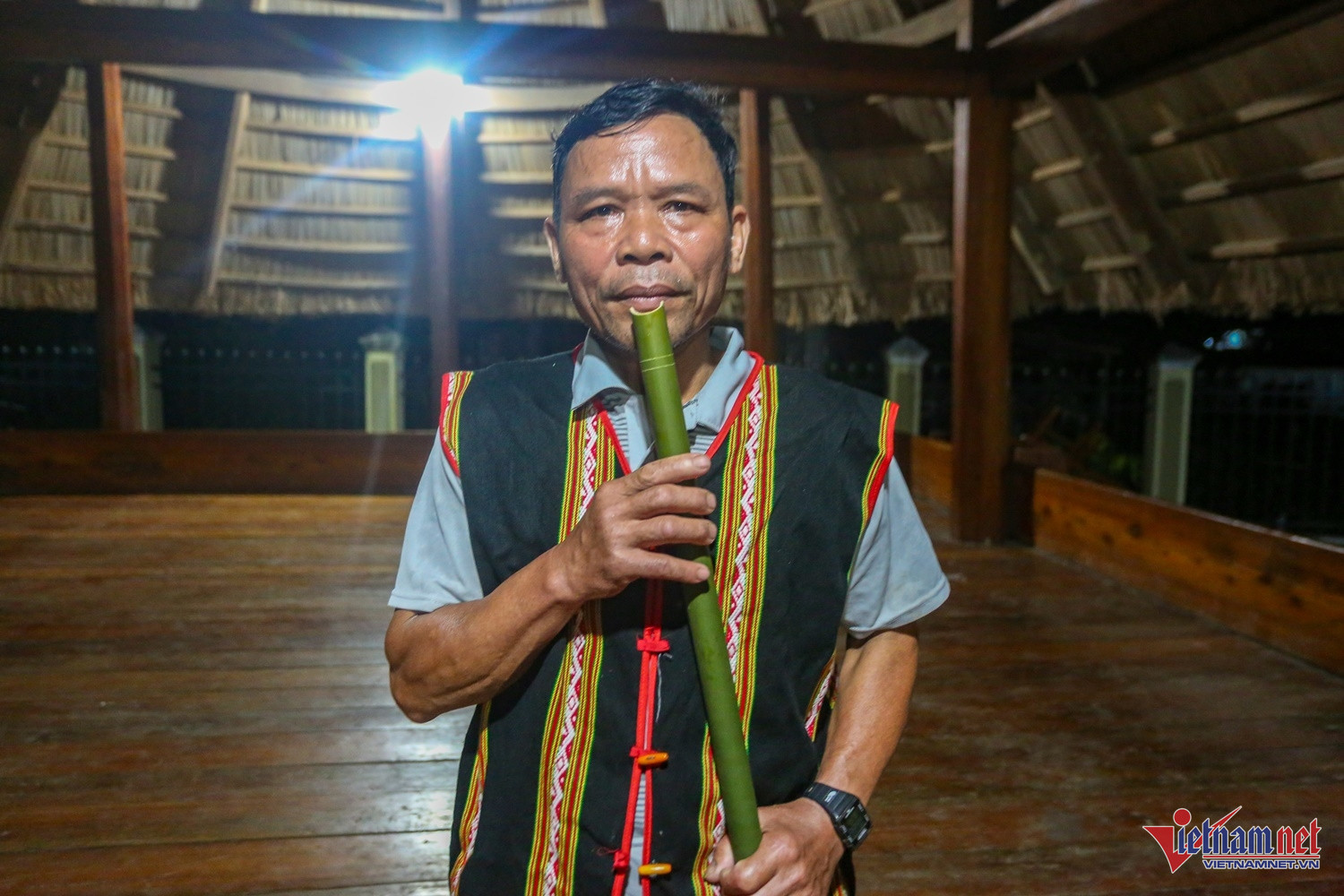
Vice Chairman of Dak Pring commune, Hien Quyen, shared that in recent years, local authorities have worked with artisans to pass on traditional crafts to the youth. Festivals, musical performances, and cultural showcases are also held regularly. Slowly, traditional products are making their way beyond the village - appearing at trade fairs, exhibitions, and as cultural gifts and fashion accessories.
Amid the Truong Son Mountains, the loom still clicks, smoke curls from the cooking fires that heat the rattan, and the dinh tut still sings - proof that the Gie Trieng culture endures. Quiet and unassuming, they protect their crafts as fiercely as they protect their forests. For them, a handwoven skirt, a rattan pack, or a dinh tut melody is enough to keep the spirit of their people alive.
Ha Nam - Nguyen Hien